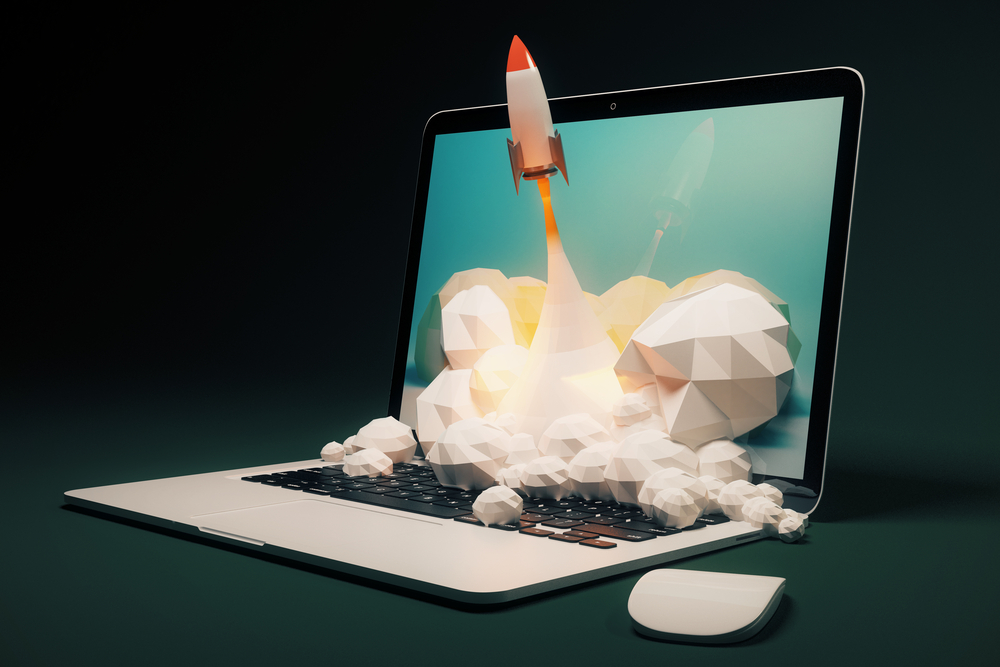Transforming Interactions With Motions
Motion in web design has become an increasingly popular trend, and for good reason. It enhances the visual appeal of a website and improves the user experience and engagement. When implemented thoughtfully, motion can guide users through the interface, provide feedback, and create a sense of delight.
At Now Media Group, a leading digital marketing agency based in San Diego, CA, we understand the importance of incorporating motion into web design to capture and retain audience attention. To learn more about how motion can elevate your online presence, call us at (858) 333-8950.
Types of Motion in Web Design
Several types of motion can be incorporated into web design, such as:
- Scrolling Animations: These animations are triggered as the user scrolls through the website, engagingly revealing content or other elements.
- Hover Effects: Interactive effects occur when the user hovers over an element, such as scaling, rotating, or revealing additional information.
- Loading Animations: Animations that provide visual feedback while content or data is being loaded help to keep users engaged.
- Micro-interactions: Small, subtle animations that provide feedback for user actions, such as a button press or form submission.
- Parallax Effects: These create a sense of depth by moving background and foreground elements at different speeds, creating an illusion of 3D space.
Planning for Motion in Web Design
Before implementing motion features on your website, it’s essential to plan it out and consider the following:
- Performance and Load Times: Motion can impact your website’s performance, so make sure to optimize animations and ensure they don’t negatively affect load times. Slow page load times will decrease conversion rates.
- Accessibility: Motion should be designed with accessibility in mind, considering users with disabilities or preferences for reduced motion.
- Motion Guidelines and Principles: Defining consistent guidelines and principles for motion design will ensure a cohesive and intentional user experience.
Tools and Technologies for Implementing Motion
CSS Animations
CSS animations provide native support for creating simple animations using keyframes and transitions. While CSS animations have limitations in terms of complexity and control, they offer a lightweight and performant solution for basic animations. They’re particularly suitable for animating CSS properties like opacity, transform, and color.
JavaScript Libraries
Libraries like GreenSock and Velocity.js offer advanced animation capabilities and greater control over motion. These libraries provide various features, including timeline management, easing functions, and support for complex animation sequences. They allow for more intricate and dynamic animations, making them suitable for complex user interactions and micro-interactions.
SVG Animations
Scalable Vector Graphics (SVG) can be animated using CSS or JavaScript, creating smooth and scalable animations. SVG animations are particularly useful for creating animated icons, illustrations, and other vector-based graphics. They can be easily scaled without losing quality, making them ideal for responsive design.
Lottie
Lottie is a library that allows you to import and render Adobe After Effects animations on the web. This enables designers to create complex and expressive animations in After Effects and seamlessly integrate them into web projects. Lottie animations can be interactive and responsive, making them suitable for various use cases, such as loading animations, micro-interactions, and branded animations.
Best Practices for Implementing Motion
While incorporating motion can enhance the user experience, it’s essential to follow best practices:
- Subtle and Purposeful Motion: Motion should be subtle and serve a purpose rather than being distracting or overwhelming.
- Maintaining Consistency: Animations should be consistent throughout the website, adhering to the defined motion guidelines and principles.
- Providing Clear Feedback: Motion should provide feedback to users, helping them understand the current state of the interface or the result of their actions.
- Enhancing Brand Personality: Motion can reinforce a brand’s personality and create a unique and memorable experience for users.
Examples and Case Studies
Many popular websites have successfully implemented motion design, enhancing their user experience. Examples include:
- Airbnb: The Airbnb website features smooth scrolling animations, hover effects, and micro-interactions that add delight to the user journey.
- Apple: Apple’s website utilizes parallax effects and subtle animations to showcase its products in an engaging and immersive way.
- Stripe: Stripe’s website uses motion to guide users through the interface and provide feedback on user actions, creating a seamless experience.
Testing and Optimizing Motion
Performance Testing
Performance testing is essential to ensure that animations do not negatively impact the performance and load times. This can be achieved through various techniques, such as monitoring frame rates, measuring load times with and without animations, and profiling the performance impact of different animation libraries or techniques.
By regularly conducting performance tests, you can identify potential bottlenecks and make informed decisions about optimizing or simplifying animations. This may involve techniques like code splitting, lazy loading animations, or reducing the complexity of animations on lower-end devices.
User Testing
Motion design can enhance the user experience and validate assumptions through user testing. Gather feedback from a diverse group of users on the motion design implementation, identifying areas for improvement, potential issues, or accessibility concerns. User testing can provide valuable insights into how users perceive and interact with motion elements, allowing you to refine the animations to better meet their needs and expectations. This may involve adjusting animation timing, easing functions, or removing unnecessary motion elements.
Iterating and Refining
Based on performance data and user feedback, continuously refine and optimize the motion design to enhance the overall user experience. This iterative process involves making adjustments to animation properties, such as duration, delay, and easing, as well as addressing any performance or accessibility concerns.
Regularly updating and improving the motion design ensures that it remains effective, engaging, and aligned with the evolving needs of users and the website’s goals. Embrace continuous improvement, and be prepared to adapt and refine the motion design as technology and user preferences change over time.
Take Your Website to the Next Level — Call Now!
Ready to enhance your website with captivating motion design? Contact Now Media Group at (858) 333-8950 to schedule a consultation with one of our consultants. Let’s elevate your online presence together!
